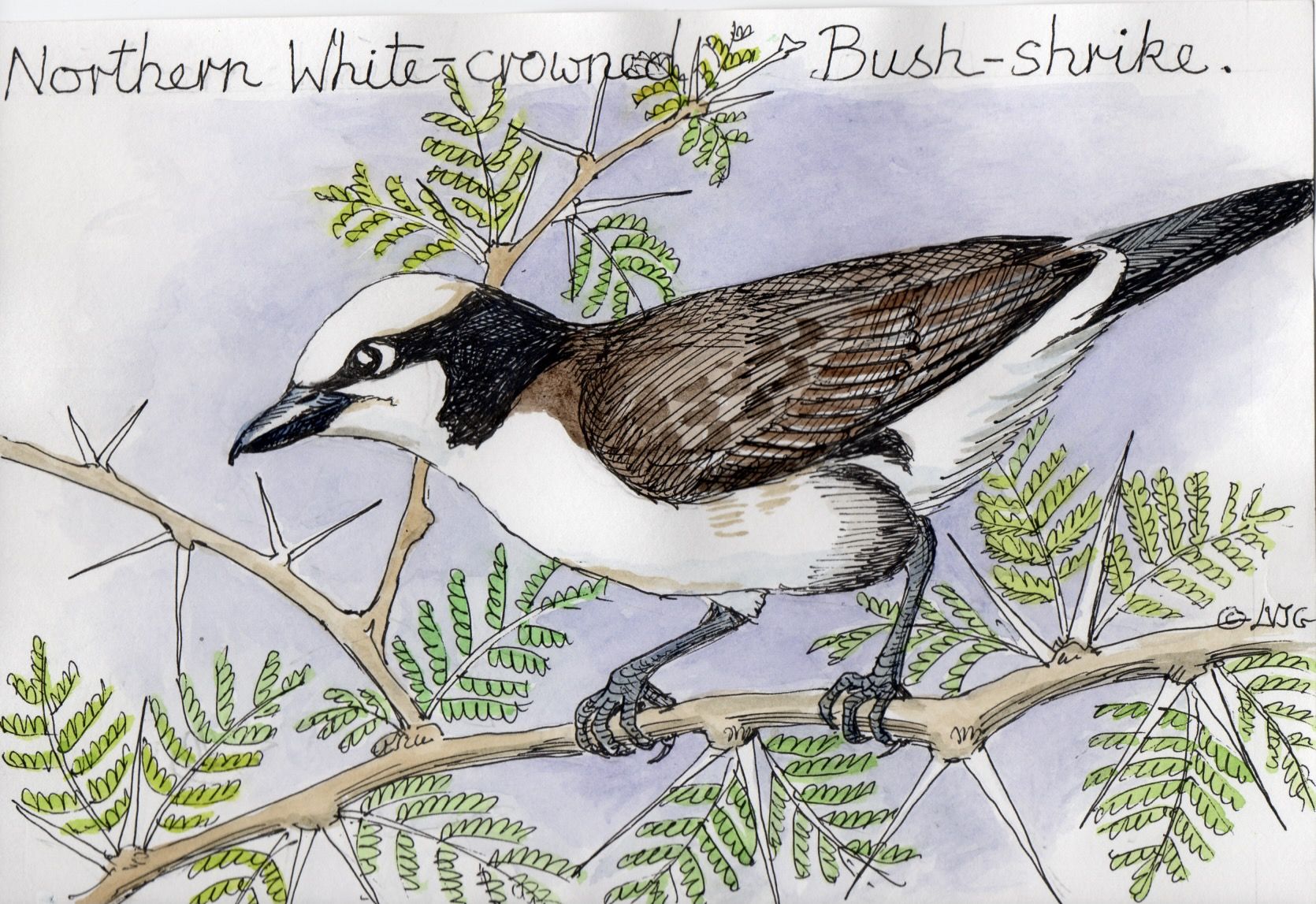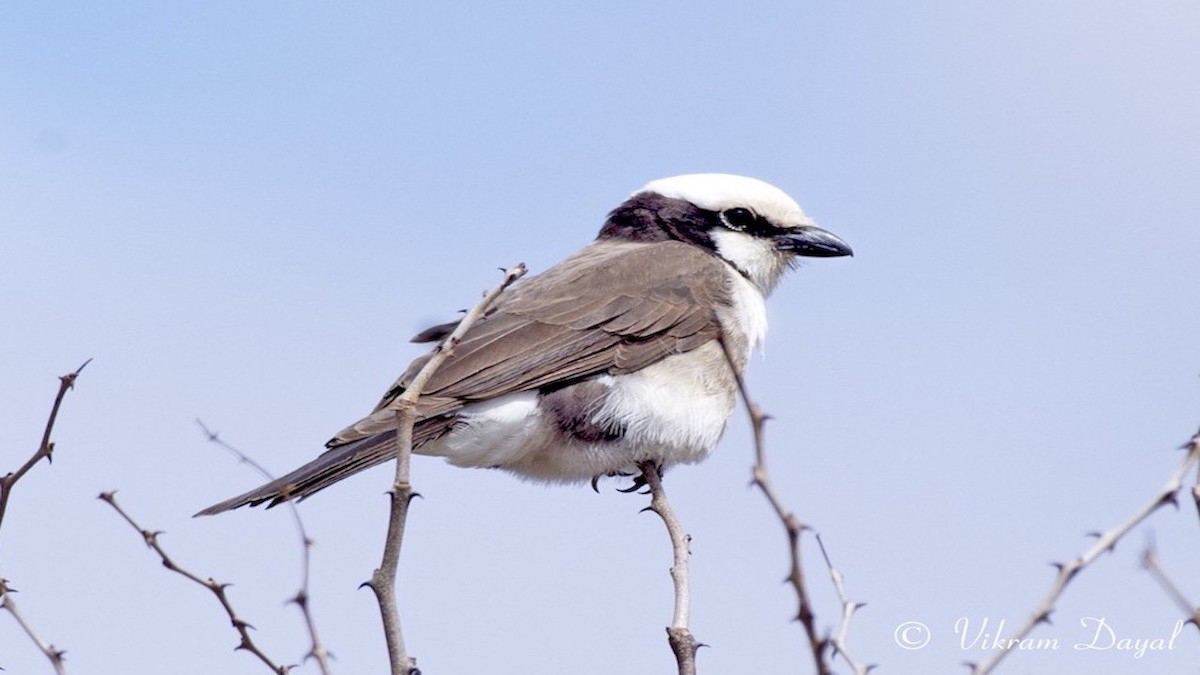Social Structure
These birds are gregarious and as many as a dozen may be in a flock. They also sometimes forage in small groups, but when mating, they can be territorial.
Communication
These birds have a range of noisy and harsh calls, including single squeaks or squawks.
Behavior
From an elevated perch, these shrikes scan the area for prey on the ground. They also eat insects while in flight, glean them from plants, and search for food on the backs of large mammals.
Conservation
Least concern
Diet
Northern white-crowned shrikes mainly eat insects such as beetles and grasshoppers. When they eat butterflies, they tear off the wings.
Breeding
Monogamous pairs construct nests from grass and spider webs in trees. Both parents—and sometimes offspring from a previous brood—will help raise the hatchlings, which can remain dependent for around three months.
Friends & Foes
Birds of prey can be threatening.
Population in Kenya
They are found in most of east Africa.
Range & Habitat
These birds are found in eastern Africa.
Northern white-crowned shrikes prefer dry bush, open acacia woodland, and other arid habitats; they also frequent gardens and parks.



